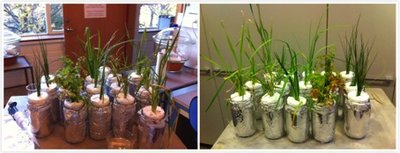Yang Zhang, PhD student
Hans Brix, Professor
Phytoremediation of pharmaceuticals at trace levels by constructed wetlands (CWs) has already been demonstrated (1). Nevertheless, the mechanisms by which these emerging contaminants are removed in this green technology are still unknown (2). It is hypothesized that plant metabolism and plant root exudates trigger microbial degradation in the root environment and chemical reactions with the filter matrix.
It is the aim of the present research to increase the understanding of the removal processes in order to ultimately be able to improve the existent design of phytodegradation systems.
Current experiments consist in the comparison of different plants in pharmaceuticals removal efficiency, metabolites, enantiomeric selectivity, and also aquatic plant physiochemical biological parameters, such as plant growth, plant uptake, root exudates in pilot scale and microcosms studies.


Pictures of emergent plants in a laboratorial study.
Literature relevant for the project
(1) Matamoros, V., Arias, C., Nguyen, L., Salvadó, V., & Brix, H. (2012). Occurrence and behavior of emerging contaminants in surface water and a restored wetland. Chemosphere, 88(9): 1083-1089.
(2) Carvalho, P.N., Basto, M.C.P., Almeida, C.M.R., Brix, H. (2014). A review of plant-pharmaceutical interactions: from uptake and effects in crop plants to phytoremediation in constructed wetlands. Environ. Sci. Pollut. Res, Doi: 10.1007/s11356-014-2550-3